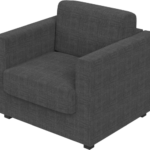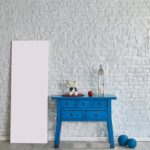What does weight of home decor fabric mean and why is it important? When it comes to home decor fabric, understanding its weight is crucial in determining its suitability for different projects. Whether you’re looking to reupholster furniture or create window treatments, the weight of the fabric can greatly impact the final outcome of your project.
Home decor fabric refers to a wide range of textiles specifically designed for use in decorating interior spaces. These fabrics are often heavier and more durable than apparel fabrics, as they need to withstand daily wear and tear. Understanding the basics of home decor fabric, including its weight, is essential for making informed decisions about which fabric to use for your project.
The weight of home decor fabric plays a significant role in how it drapes, hangs, and holds up over time. Factors such as fiber content, weave, and finish all contribute to the overall weight of the fabric. In this article, we will explore the importance of weight in home decor fabric, factors that affect the weight, different types of weights available, and how to choose the right weight for your specific project.
Importance of Weight in Home Decor Fabric
When it comes to home decor fabric, the weight of the material plays a significant role in determining its quality and suitability for various projects. The weight of a fabric refers to how heavy or light it feels and is measured in ounces per square yard. Understanding the importance of weight in home decor fabric is essential for making informed decisions about which type of fabric to use for different projects.
The weight of home decor fabric affects not only the look and feel of the finished product but also its durability and functionality. Heavier fabrics are generally more durable and better suited for upholstery and drapery, while lighter-weight fabrics are often used for decorative accents such as throw pillows and curtains. Additionally, the weight of the fabric can impact its drape, texture, and overall appearance.
Factors such as fiber content, weave, and finish can all influence the weight of home decor fabric. Natural fibers like cotton and linen tend to be lighter in weight, while synthetic fibers like polyester and nylon can be heavier. The way the fabric is woven and finished also contributes to its weight, with tighter weaves generally resulting in heavier fabrics.
| Factor | Influence on Fabric Weight |
|---|---|
| Fiber Content | Natural fibers tend to be lighter; synthetic fibers can be heavier |
| Weave | Tighter weaves generally result in heavier fabrics |
| Finish | The way the fabric is finished can impact its weight |
Factors Affecting the Weight of Home Decor Fabric
Fiber Content
The type of fibers used in home decor fabric greatly affects its weight. Natural fibers like cotton, linen, and silk tend to be lighter in weight compared to synthetic materials such as polyester and nylon. Blended fabrics, which are made from a combination of natural and synthetic fibers, can also vary in weight depending on the fiber ratio.
Weave
The weave of the fabric also plays a crucial role in determining its weight. Fabrics with a tighter weave generally feel heavier because there is more material packed into a smaller space. On the other hand, looser weaves result in lighter fabrics as there is less material per square inch. Additionally, the type of weave – whether it’s plain, twill, or satin – can impact the weight distribution and overall heaviness of the fabric.
Fabric Thickness
The thickness or gauge of the yarns used to create the fabric greatly influences its weight. Thicker yarns contribute to a heavier fabric while finer yarns result in lighter-weight textiles. Furthermore, the number of yarns per inch (known as thread count) also affects the overall weight and density of the fabric.
Understanding these factors will help you make informed decisions when selecting home decor fabrics for your projects. By considering fiber content, weave, and fabric thickness, you can choose a suitable weight that aligns with your desired aesthetic and functional needs for your home decor endeavors.
By carefully considering all these factors, you will be equipped to make informed decisions about which weight of home decor fabric will best suit your project needs.
Different Types of Home Decor Fabric Weights
When it comes to home decor fabric, understanding different types of fabric weights is crucial in determining the suitability of a particular fabric for your project. The weight of a fabric refers to how heavy or light it is per yard. This measurement can have a significant impact on the overall look and feel of your home decor, as well as its functionality.
There are various types of home decor fabric weights, each with its own unique characteristics. Some common fabric weights include lightweight, medium-weight, and heavyweight. Lightweight fabrics are often more delicate and suitable for decorative purposes such as curtains and drapes. On the other hand, medium-weight fabrics offer a balance between drape and structure, making them suitable for upholstery and pillow covers. Heavyweight fabrics are durable and sturdy, perfect for furniture upholstery and heavy-duty usage.
Apart from the common lightweight, medium-weight, and heavyweight categories, there are also specific measurements used to determine the weight of home decor fabrics. These measurements are typically expressed in ounces per square yard (oz/yd²) or grams per square meter (gsm). Understanding these measurements can help you make informed decisions about which type of home decor fabric weight is best suited for your specific project.
It’s important to consider not only the aesthetic appeal but also the practicality when choosing the right weight for your project. Factors such as the intended use of the fabric, desired durability, and maintenance requirements should all be taken into account before making a decision. By being aware of these factors, you can confidently select the most appropriate home decor fabric weight for your DIY or professional projects.
| Types | Description |
|---|---|
| Lightweight | Delicate, suitable for decorative purposes such as curtains |
| Medium-weight | Balance between drape and structure, suitable for upholstery and pillow covers |
| Heavyweight | Durable and sturdy, perfect for furniture upholstery |
How to Choose the Right Weight for Your Project
When it comes to choosing the right weight for your home decor fabric project, there are a few things to consider to ensure the best outcome. The weight of the fabric can significantly impact the look and feel of your finished project, so it’s important to make an informed decision. Here are some key factors to keep in mind when selecting the right weight for your project.
Consider the Function
One of the first things to consider when choosing the right weight for your project is the function of the fabric. Are you looking for something durable and heavy-duty, or do you need something lighter and more decorative? The intended use of the fabric will have a significant impact on the weight you choose. For example, if you’re making curtains for a sunny room, you may want a heavier fabric that provides more insulation and blocks out light.
Think About Aesthetic
In addition to function, it’s also important to think about the aesthetic you’re trying to achieve. Heavier fabrics tend to have a more structured and formal look, while lighter fabrics can provide a more airy and casual feel. Consider the style of your home decor and choose a weight that complements that aesthetic.
Factor in Durability
Durability is another important consideration when choosing the right weight for your project. Heavier fabrics are generally more durable and can withstand more wear and tear, making them ideal for upholstery or high-traffic areas. If you’re making pillows or drapes that won’t be handled as much, a lighter weight fabric may be suitable.
By taking these factors into account, you can make an informed decision about which fabric weight is best suited for your specific project. Whether you’re looking for something functional, decorative, or durable, understanding how different weights can affect your finished product will help you choose with confidence.
Tips for Working With Heavier Home Decor Fabrics
If you are working with heavier home decor fabrics, it’s important to take some extra precautions to ensure the success of your project. Here are some tips to keep in mind:
Tips for Working With Heavier Home Decor Fabrics
- Use the right tools and equipment: When working with heavier home decor fabrics, make sure you are using the appropriate tools and equipment. This may include heavy duty scissors, a strong sewing machine, and durable thread.
- Pre-wash the fabric: Some heavier home decor fabrics may shrink or change in texture after washing. It’s important to pre-wash these fabrics before starting your project to avoid any unwanted surprises later on.
- Consider the grainline: Pay attention to the grainline of the fabric when cutting out your pattern pieces. Heavier fabrics can be more difficult to manipulate, so taking care with the grainline will help ensure that your finished project hangs properly.
Working with heavier home decor fabrics can be challenging, but with the right approach and attention to detail, you can create beautiful and professional-looking results.
These tips are invaluable when working with heavier home decor fabrics because they can make a significant difference in the outcome of your project. By following these suggestions, you can ensure that your project turns out exactly as you envision it.
Common Misconceptions About Fabric Weight
When it comes to home decor fabric, there are several common misconceptions about fabric weight that can lead to confusion among consumers. Understanding these misconceptions is crucial in making informed decisions about the right fabric for your project.
One common misconception is that the weight of home decor fabric only refers to how heavy or light the fabric feels. In reality, fabric weight refers to the density and thickness of the fabric, which can have a significant impact on its performance and suitability for different projects. It’s important to consider factors such as drape, durability, and ease of manipulation when choosing the right weight for your home decor project.
Another misconception is that heavier fabrics are always better for home decor projects. While heavier fabrics may provide more structure and durability, they can also be more challenging to work with and may not be suitable for all applications. On the other hand, lighter fabrics can offer better drape and versatility, making them a preferable choice for certain projects.
It’s also important to dispel the myth that fabric weight is the only factor to consider when choosing home decor fabric. In addition to weight, factors such as fiber content, weave, and finish also play a crucial role in determining the suitability of a fabric for a specific project. It’s essential to take a holistic approach and consider all these factors when making decisions about home decor fabric.
Conclusion
In conclusion, understanding the weight of home decor fabric is essential for making informed decisions when it comes to choosing the right fabric for your project. The weight of a fabric refers to its thickness and density, which can greatly impact its appearance, durability, and suitability for specific uses.
By considering the factors affecting the weight of home decor fabric and familiarizing yourself with the different types of fabric weights available, you can ensure that you select the most suitable option for your needs.
When choosing the right weight for your project, it’s important to consider the specific requirements of the item you are making. For example, heavier fabrics may be more suitable for upholstery or drapery, while lighter fabrics may be better suited for decorative pillows or curtains. Additionally, it’s important to take into account the style and aesthetic you are aiming for in order to achieve the desired look and feel in your space.
It’s also crucial to remember that working with heavier home decor fabrics may require special techniques and equipment. Tips such as using supportive underlining or interfacing and adjusting your sewing machine settings can help ensure successful outcomes when working with heavier fabrics. Overall, by understanding the weight of home decor fabric and its implications, you can make informed decisions and achieve satisfying results in your home decor projects.
Frequently Asked Questions
What Does Weight of Fabric Mean?
The weight of fabric refers to how heavy or light the fabric is per square yard or meter. It is a measure of the density and thickness of the material, which can affect its durability and drape.
What Is a Good Weight for Upholstery Fabric?
A good weight for upholstery fabric depends on several factors such as the type of furniture, its intended use, and personal preference. Generally, a medium to heavy weight fabric is suitable for upholstery as it needs to withstand regular wear and tear.
How Heavy Should Fabric Weights Be?
Fabric weights can vary depending on the type of project you are working on. For example, lightweight fabrics are suitable for clothing and drapery, while heavier weights are better for upholstery and home decor projects where durability is important. It’s essential to consider the specific requirements of your project when choosing fabric weights.

I’m thrilled to be your companion on this exciting journey through the world of home decor and design. With a passion for turning houses into homes and a keen eye for the finer details, I’m here to help you transform your living spaces into beautiful, functional, and meaningful havens.





